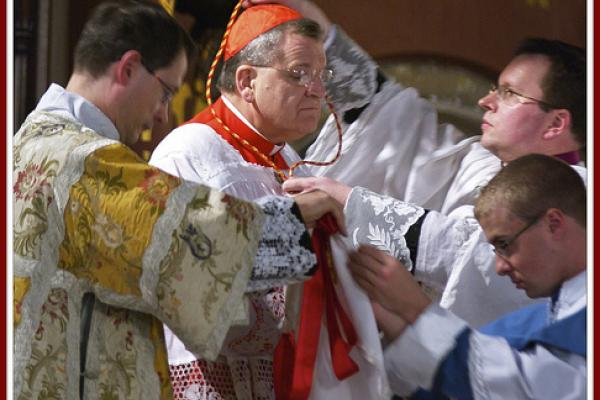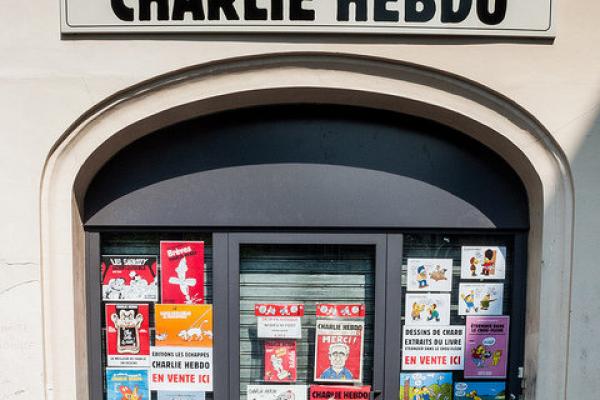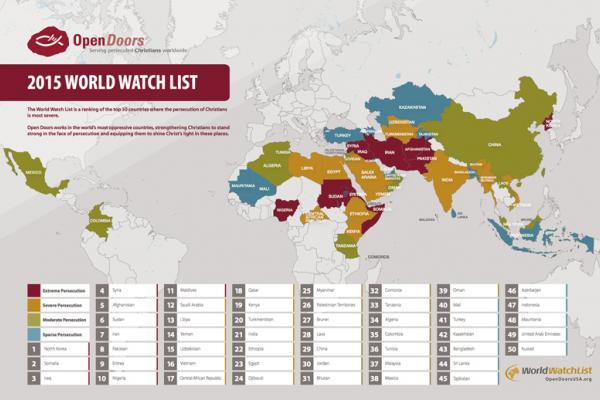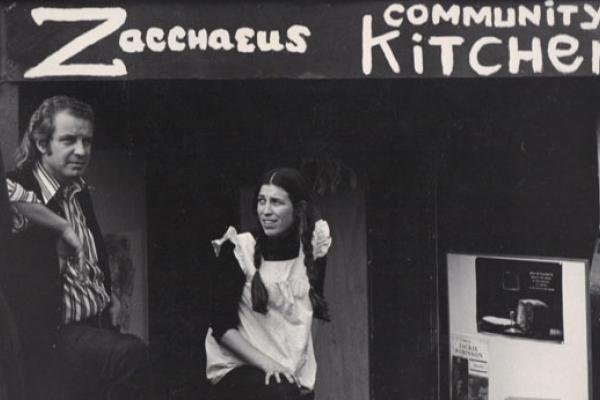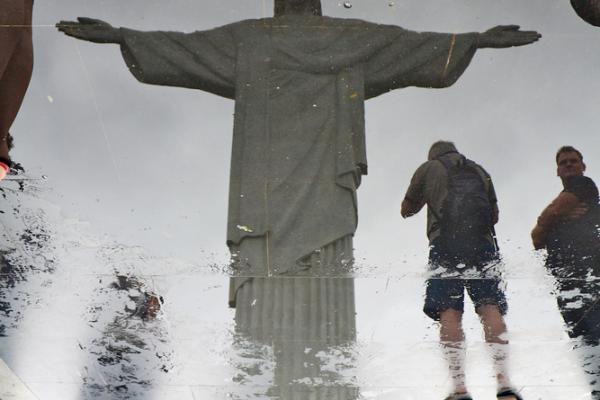In an online interview this week, Cardinal Raymond Burke said the “radical feminism which has assaulted the Church and society since the 1960s has left men very marginalized.”
But many women will head to Mass this weekend and note that the priest, bishop, and pope have something in common: They are all men, and the power they hold in institutional church structures hardly looks like marginalization.
In spite of Burke’s paranoid opinion that “rampant liturgical experimentation” resulted in men who were “really turned off” by the Mass, women will stand and recite a recently revised Nicene Creed that states that Christ died “for us men.” They will pray to a God referred to only by male pronouns even as God’s gender remains stubbornly mysterious. Even the language of the liturgy negates the presence of women.
Yet Burke is bewildered by women’s “self-focused attitudes” and “constant and insistent demanding of rights.” Women, he said, “respond very naturally to the invitation to be active in the Church.” And yet, when the sanctuary becomes “full of women,” and the parish activities and liturgy are influenced by them, these become “so feminine in many places that men do not want to get involved.”
The fact that Burke gave this interview to a website whose very name — The New Emangelization — may lead many to question whether it is actually a parody, indicates the level of absurdity in Burke’s claims that women have somehow taken over the Catholic Church.
There is also something disturbing and insulting about his ideas concerning the men already in the church.
A horrific attack on a satirical magazine that mocked Islam left 12 people dead on Jan. 7 and put the Muslim community on edge.
The hunt is now on for the assailants, two or three masked men who witnesses and police say opened fire with automatic weapons inside the office of French weekly Charlie Hebdo.
“People are exploiting this one way or another,” said Fateh Kimouche, 38, the founder of Al Kanz, a prominent French Muslim blog.
“The terrorists didn’t distinguish what faith their victims were from. … I just found out that one of the cops killed, his name was Ahmed. Even Muslims aren’t safe.”
The three gunmen who attacked the magazine during an editorial meeting reportedly shouted “Allahu Akbar,” and described themselves as al-Qaida in Yemen. They killed prominent cartoonists, staff members and two police officers in what French officials described as a carefully planned and executed attack.
The French weekly has drawn the ire of Muslims before. Its offices were firebombed in 2011, after a spoof issue skewering Muhammad, the Muslim prophet. A year later, the magazine published crude caricatures of Muhammad, shown naked and in sexual poses. Most Muslims object to any depictions of the prophet, even if reverent.
Reaction — and condemnation — was swift.
January is National Human Trafficking Awareness Month, but my wish is that we all work to make a real difference every month and every day of the year. I am a survivor of child sex trafficking. But there are other forms of modern-day slavery, like labor trafficking, that are just as evil. Human trafficking affects vulnerable women, men, children, and adults in both developed and emerging countries. Whether it is a 12-year-old runaway — like I was — or a 35-year-old man looking for a better job, vulnerable people are exploited and coerced every day.
Children who have been trafficked — as I was — often do not recognize themselves as victims. It took me decades to begin to see myself as a victim. The manipulation, exploitation, and fear put in place by my trafficker set about normalizing my trauma and also convinced me that it was all my fault.
My greatest hope and purpose in life today is to reach others in as many ways as I can so that they may never have to experience what I did for so long. We must ask important questions in order to really begin to make a difference. Here are a few of the most important questions to be asking.
Lost in the extensive media coverage of Mario Cuomo’s recent death was mention of one of the former governor’s most enduring achievements: the New York state biomedical Task Force on Life and the Law.
During his first term as governor, Cuomo established the 25-member task force because he was concerned that as developments in medical technology and science accelerated, neither society nor state government was prepared for the critical decisions required in the face of such rapid change.
Cuomo’s instruction to the task force was to study the new frontier of bioethics and make specific public policy recommendations for state lawmakers.
The task force included Christian and Jewish clergy, physicians, nurses, lawyers, ethicists, philosophers, academics, social workers, community leaders, and hospital administrators.
I was a founding member of the task force in 1985. During that time, I recognized that some long-held beliefs must be updated, reinterpreted or sometimes even abandoned in the face of medical advances.
Cuomo wanted us to focus on the right of patients to informed consent about their medical conditions.
From imprisonment to torture to beheadings, more Christians worldwide live in fear for their lives than at any time in the modern era.
That’s the message from Open Doors USA, which released its annual World Watch List on Jan. 7. Christian persecution reached historic levels in 2014, with approximately 100 million Christians around the world facing possible dire consequences for merely practicing their religion, according to the report. If current trends persist, many believe 2015 could be even worse.
“In regions where Christians are being persecuted as central targets, the trends and issues we track are expanding,” said David Curry, president of Open Doors, a nonprofit that aids persecuted Christians in the most oppressive countries and ranks nations based on the severity of persecution.
North Korea tops Open Doors’ list as the worst oppressor of Christians for the 13th consecutive year, but the list is dominated by African and Middle Eastern nations. Iraq, which experienced the mass displacement of Christians from its northern region, ranked third. Syria was listed fourth, due to the reign of ISIS in that war-torn region. Nigeria ranked 10th, due in part to the more than 1,000 Christians murdered or kidnapped by terrorist groups such as Boko Haram. Also included in the top 10 are Somalia, Afghanistan, Sudan, Iran, Pakistan, and Eritrea.
In the first moments of Selma, I feel butterflies rise in my stomach as Dr. Martin Luther King, Jr. (David Oyelowo) practices his 1964 Nobel Peace Prize speech while trying to tie his ascot. Butterflies rumble in my soul. I am almost fearful as we step into the world of Selma, because I am a student of the Civil Rights era. The movement’s lessons have shaped my life. I feel like I am about to meet my heroes.
So, King fiddles with his ascot in Oslo, Norway, and his wife Coretta (Carmen Ejogo) comes close to comfort him, and little girls descend into the bowels of the Sixteenth Street Baptist Church in Birmingham, Ala., and butterflies rise and my soul sits at attention. I know what is coming: hell … and glory.
The film still haunts me. Every performance is nuanced, textured, and humanizing. Director Ava DuVernay’s technique is breathtaking. Her eye translates words into feelings into images — moving images that never leave you. Brutality and reverence occupy single frames. At once, the audience is horrified and awe-struck. I have no doubt Selma should win Oscars.
It is an amazing film, but it doesn’t haunt me because of its excellence. As I sat in the dark watching the movement unfold before my eyes, it was not the past that haunted me. It was the present.
A makeshift bomb placed outside a local chapter of the NAACP in Colorado went off yesterday, releasing smoke but failing to ignite a gasoline can placed beside it, Newsweek reports. There were no injuries.
The FBI has declared the bombing "deliberate," but is still investigating whether the NAACP was the intended target. The building's other tenant, a hair salon, does not appear to have been the target.
The media's slow-to-silent response to the incident has raised ire on Twitter, with many concerned that the bombing did not make news on mainstream outlets until today.
"Thankfully, no injuries were reported, but the fear it struck in the local community and in citizens concerned for issues of racial justice everywhere were felt immediately ... In a time when racial tensions in our country appear to be growing, the troubling nature of this act of domestic terrorism should be blatantly obvious, but the lack of mainstream media coverage of the bombing ... was downright disturbing," wrote Shaun King, staff writer for the Daily Kos.
According to Newsweek, the FBI has asked that anyone with information call its Denver tip line at 303-435-7787.
Kathleen calls Ed’s lifework — which also includes authoring the 1979 D.C. statehood constitutional convention initiative and acting as Pax Christi USA’s first General Secretary beginning in 1972 — "a tiny seed that really sparked a lot of transformational education."
Kathleen mentions several former volunteers who went on to start their own hospitality houses, federations for organic farmers, prison rehabilitation initiatives, and food and poverty programs worldwide.
And the impact of Guinan’s work lives on in the city today. In 2008, Ed and Kathleen received the WETA Hometown Hero Award for residents working for "positive change for underprivileged people." The CCNV’s medical clinic has since grown into one of D.C.’s most recognizable service groups, Bread for the City. And according to the Washington Post, the CCNV’s Federal City Shelter still houses 1,350 beds — the country’s largest shelter for the homeless.
She was 85 and nearing the end of her life. I’d never met her before. You might call her a “lapsed Christian,” or maybe she was one of the “nones.” She hadn’t been to church in decades. She called for a visit because she had anxiety about death. But what broke my heart was her anxiety about God.
“Hi,” I gently greeted her.
“Hello pastor,” she replied. She began telling me about her Catholic parents, her “fall” from Catholicism, and that she'd never felt “at home” in a Protestant church. She stated that she hadn’t stepped into a church in thirty years, and her relationship with God had suffered for it. And now, on her death bed, she felt the weight of guilt and anxiety of abandoning God.
“I’m not in a state of grace,” she said with spiritual and emotional pain.
That’s when my heart broke. She felt guilty because she believed she had abandoned God and so God had abandoned her. I began to think of all the damage many religious people have caused throughout the centuries by imposing guilt upon people. A religion that piles on the guilt isn’t worth following. A god who inflicts guilt upon us isn’t a god worthy of belief.
There is a pernicious theological claim that states God responds mimetically to us. That God imitates us. So, when we turn away from God, God turns away from us. When we abandon God, God abandons us.
That’s a lie. Don’t believe it.
Armed with AK-47s and a rocket-launcher, three masked attackers opened fire in the office of a French newspaper, killing two police officers and ten staff. After hijacking a car, the attackers are currently on the run. Parisian authorities are evacuating local schools and guarding other newspaper offices as they scour the city.
According to the Guardian, French President François Hollande has described the shooting as “a terrorist attack, without a doubt” and raised the terror alert in Paris to its highest level. This would not be the first time the magazine was subjected to terrorist attack. In an analysis of Charlie Hebdo’s commitment to satire, the Guardian reports:
